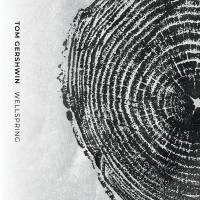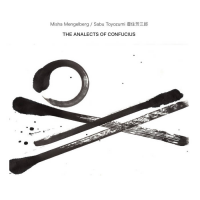Home » Jazz Articles » Album Review » Tim Hagans: Alone Together
Tim Hagans: Alone Together
But Alone Together belongs to Hagans by virtue of its greater propensity for fiery swingers. Hagans' first Pirouet disc, the sublime Beautiful Lily (2005), more clearly inhabited Copland's stylistic territory, with greater emphasis on impressionistic writing and playing, though the trumpeter contributed four of that album's eleven tracks, alongside two Copland tunes, one standard, and four spontaneous duet inventions. To be sure, while Copland has never been averse to pulling out some stops, as he did on his Both / And (Nagel-Heyer, 2006), his albums invariably lean towards introspection. Alone Together does gaze inward occasionally, but is largely brighter and more boisterous than most of Copland's discography.
If there's a single precedent to be found with Copland's oblique harmonic approach and the quartet's overall modus operandi, it's the expansive experimentation of Miles Davis' mid-1960s quintet with Herbie Hancock, Ron Carter and Tony Williams. Ruckert, stylistically outspoken and confident, channels Williams' visceral energy on the fiery post bop of Copland's "Over and Back." Built around quotes from a number of standards, but pulled together in ways nobody but Copland could, it features a solo from Hagans that, in its weaving of brisk motifs through Copland's shifting changes, is one of Alone Together's high points.
Gress and Rckert lay back on the soft classic "You Don't Know What Love Is," mirroring the unpredictable terrain taken by Miles' quintet over two nights in 1965 and documented on The Complete Live at the Plugged Nickel 1965 (Legacy, 1995), except that Hagans is in far stronger voice than Miles was on those particular evenings. "Alone Together" swings with intent, but Gress and Ruckert don't make it facile; Ruckert is particularly attuned to the risks Copland and Hagans take at every opportunity, well-served by their drummer's ability to inject the unexpected while avoiding meaningless non sequiturs.
Miles' characteristic warm tone, centered on his horn's mid-range, must have deserted him at the Nickel, but Hagans's sound is so full-bodied that, even on occasional reaches for the stratosphere, it's never brash. His muted horn on the closing ballad, "Stella by Starlight," is more poignantly touching than Miles' fragile vulnerability.
Mainstream records are rarely filled with the same irreverence and spirited sense of adventure that made Miles' second quintet remarkable even when they were playing tired standards. No, this isn't groundbreaking music, but by referencing Miles' ear-bending group, Alone Together brings excitement back to the mainstream, thanks to its invention, interplay and musicality, as opposed to the much easier-to-find demonstrable chops.
Track Listing
See You Again; Not Even the Rain; Sweet Peach Tree; Over and Back; You Don't Know What Love Is; Alone Together; Stella by Starlight.
Personnel
Tim Hagans
trumpetTim Hagans: trumpet; Marc Copland: piano; Drew Gress: bass; Jochen Ruckert: drums.
Album information
Title: Alone Together | Year Released: 2008 | Record Label: Pirouet Records
Tags
PREVIOUS / NEXT
Support All About Jazz
 All About Jazz has been a pillar of jazz since 1995, championing it as an art form and, more importantly, supporting the musicians who make it. Our enduring commitment has made "AAJ" one of the most culturally important websites of its kind, read by hundreds of thousands of fans, musicians and industry figures every month.
All About Jazz has been a pillar of jazz since 1995, championing it as an art form and, more importantly, supporting the musicians who make it. Our enduring commitment has made "AAJ" one of the most culturally important websites of its kind, read by hundreds of thousands of fans, musicians and industry figures every month.



















